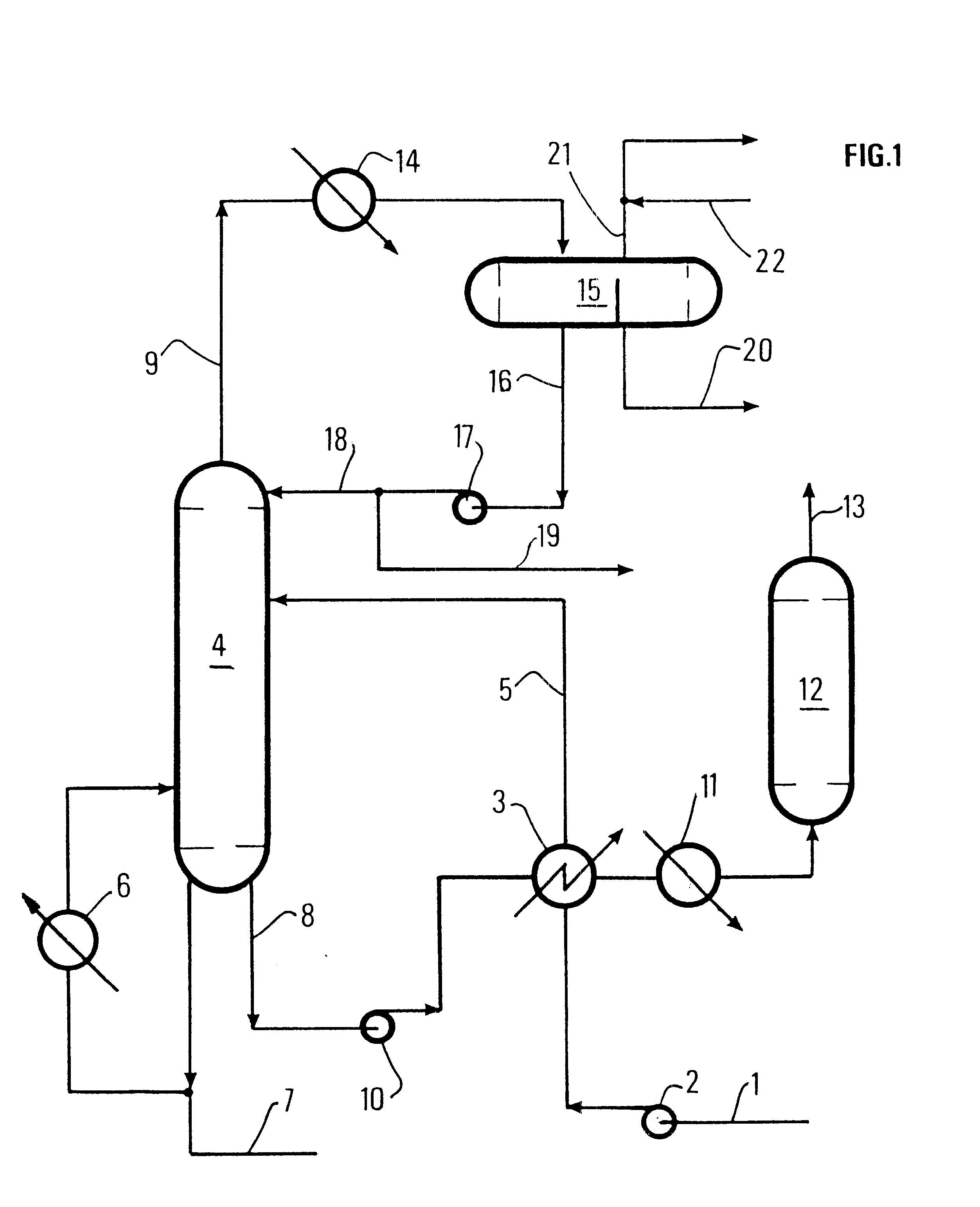Process for the production of purified water and hydrocarbons from fossil resources
a technology of fossil resources and purification water, which is applied in the direction of biological water/sewage treatment, separation processes, filtration separation, etc., can solve the problems of inability to correctly eliminate metals, inability to purify water properly, and inability to achieve purification. the effect of the degree of water purification
- Summary
- Abstract
- Description
- Claims
- Application Information
AI Technical Summary
Benefits of technology
Problems solved by technology
Method used
Image
Examples
Embodiment Construction
The Fischer-Tropsch reaction is operated continuously in a reactor consisting in a bubble column operated under a three phase regime, with a diameter of 50 mm and a height of 1500 mm.
This column is equipped with an injection nozzle for synthesis gas at the bottom of the column, a nozzle for drawing off the suspension above the liquid level, a nozzle for re-injection of the suspension at the bottom of the column, and a recirculating loop comprising a degasifier, a pump and a decanter, to separate the catalyst from the liquid reaction products.
The catalyst is based on cobalt deposited on alumina, shaped as particles of 30-100 microns. It is introduced in the column, in an amount of 400 g, together with 1500 ml of nC18 paraffin. Synthesis gas (H2 / CO=2) is introduced at a rate of 1 Nm3 / h and the reaction is driven at P=2 MPa and T=230.degree. C.
Under steady running conditions, the conversion is 60%. Reaction products are constituted by gaseous hydrocarbons (C1-C4, 24 kg / h), liquids (C5+...
PUM
| Property | Measurement | Unit |
|---|---|---|
| Time | aaaaa | aaaaa |
| Pressure | aaaaa | aaaaa |
| Pressure | aaaaa | aaaaa |
Abstract
Description
Claims
Application Information
 Login to View More
Login to View More - R&D
- Intellectual Property
- Life Sciences
- Materials
- Tech Scout
- Unparalleled Data Quality
- Higher Quality Content
- 60% Fewer Hallucinations
Browse by: Latest US Patents, China's latest patents, Technical Efficacy Thesaurus, Application Domain, Technology Topic, Popular Technical Reports.
© 2025 PatSnap. All rights reserved.Legal|Privacy policy|Modern Slavery Act Transparency Statement|Sitemap|About US| Contact US: help@patsnap.com

